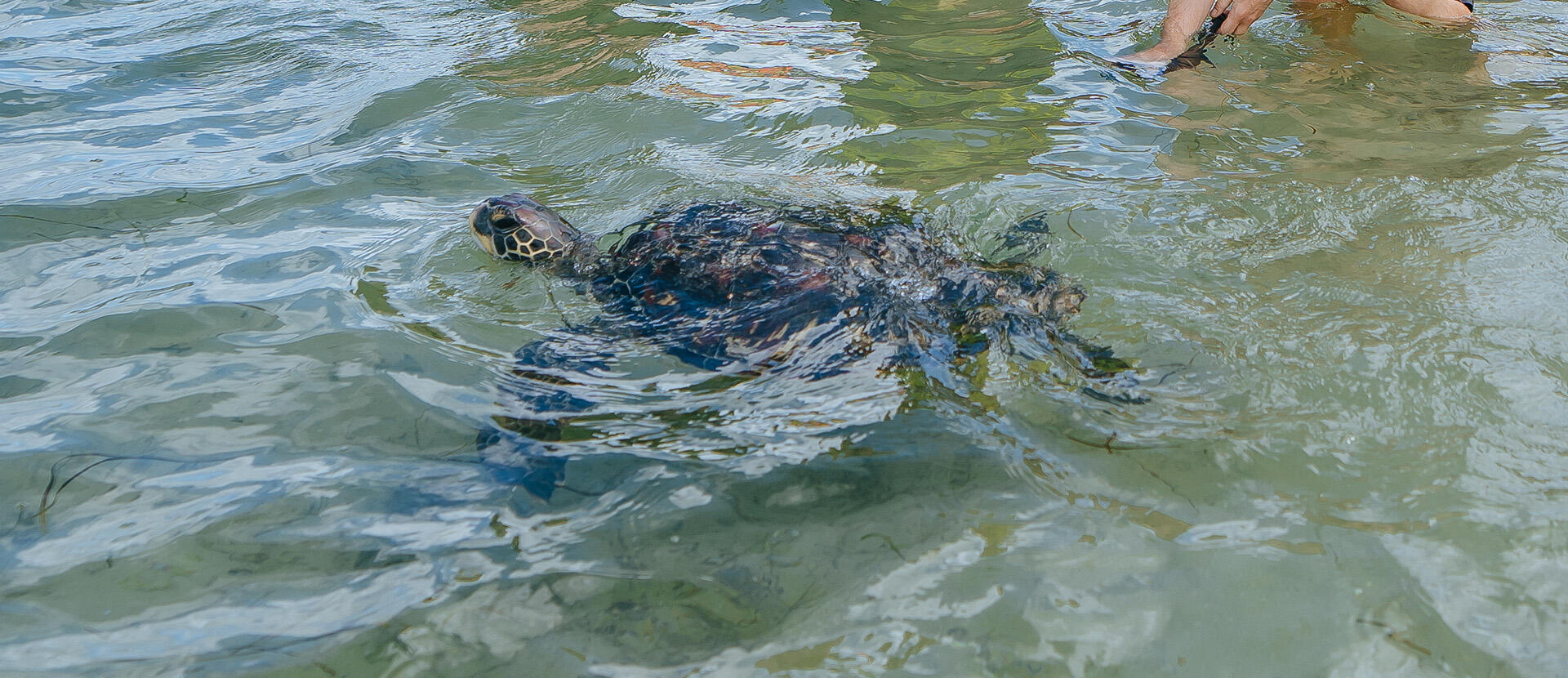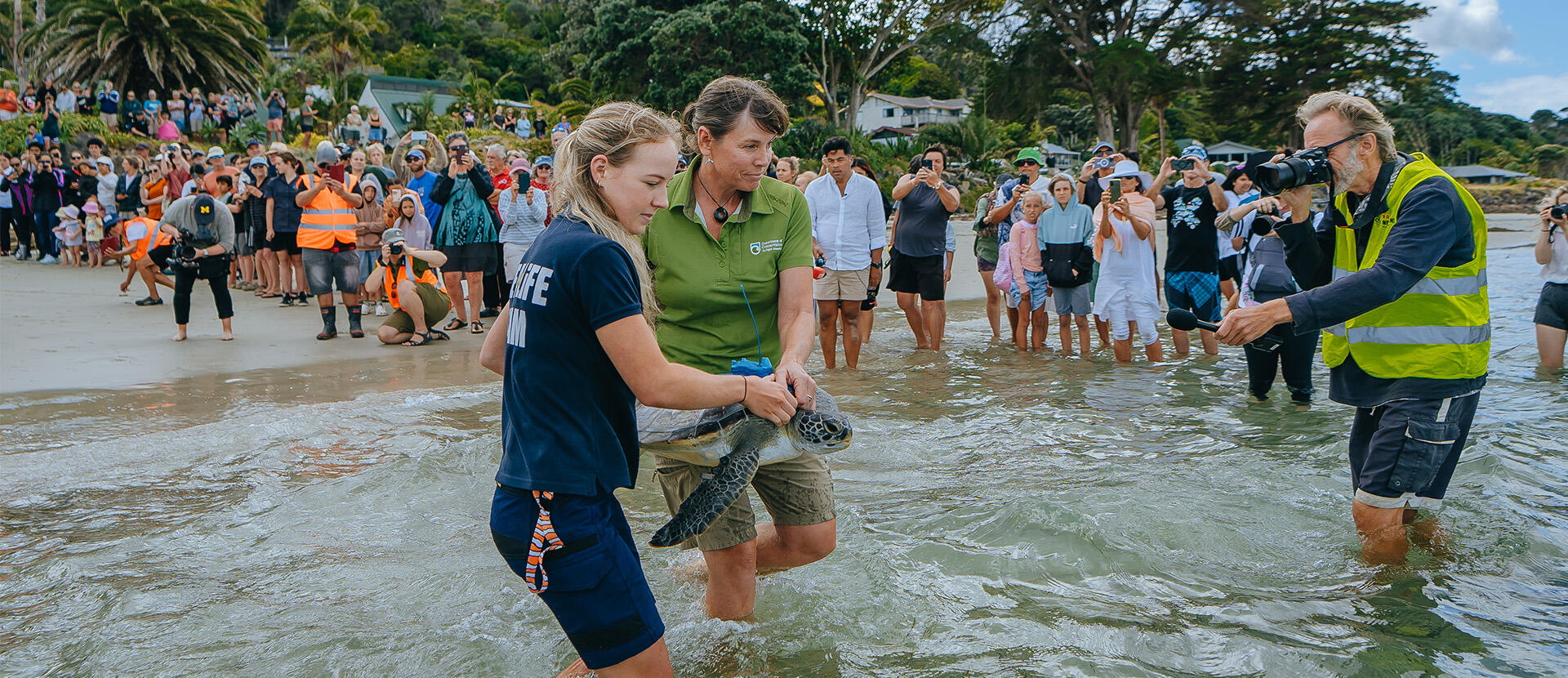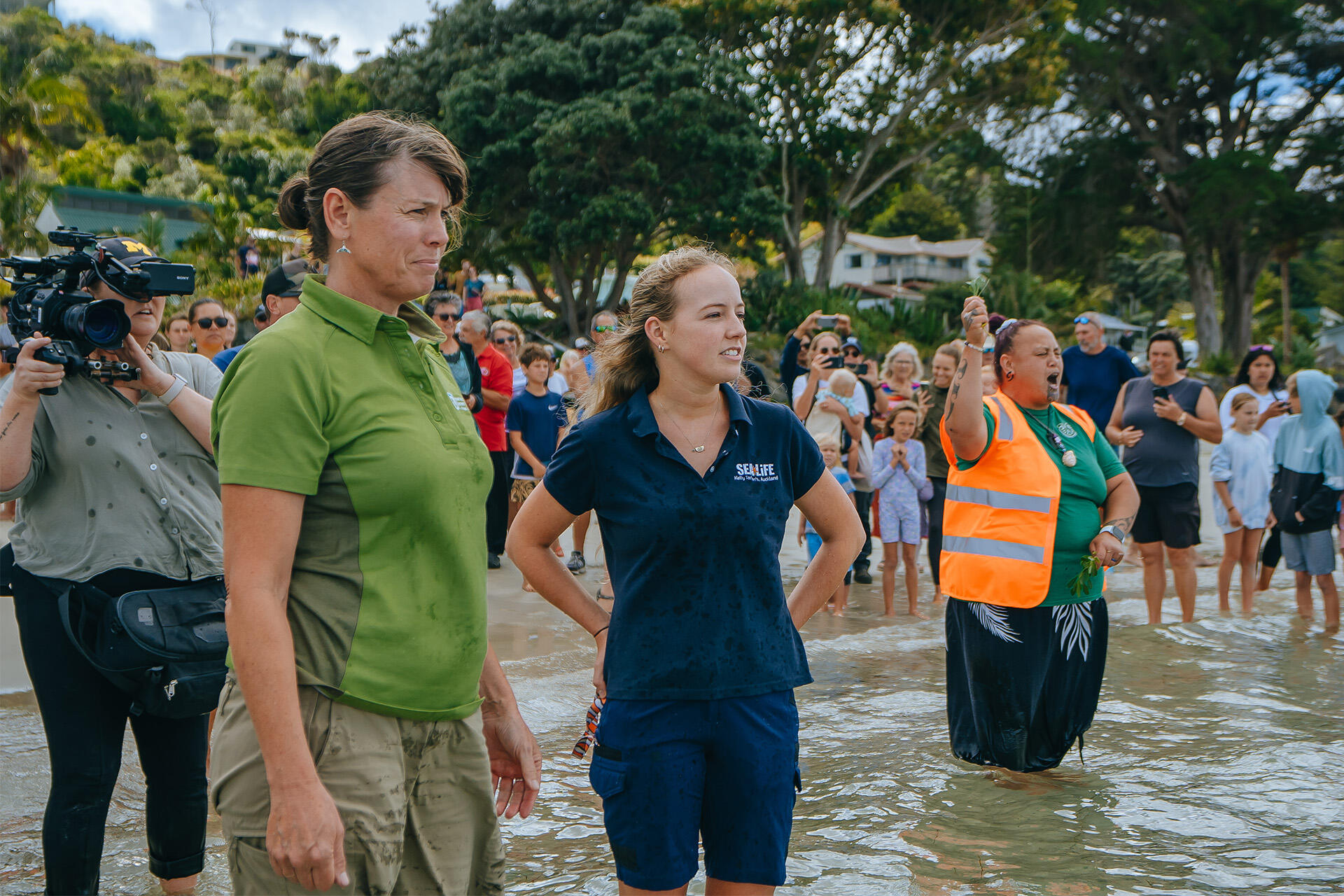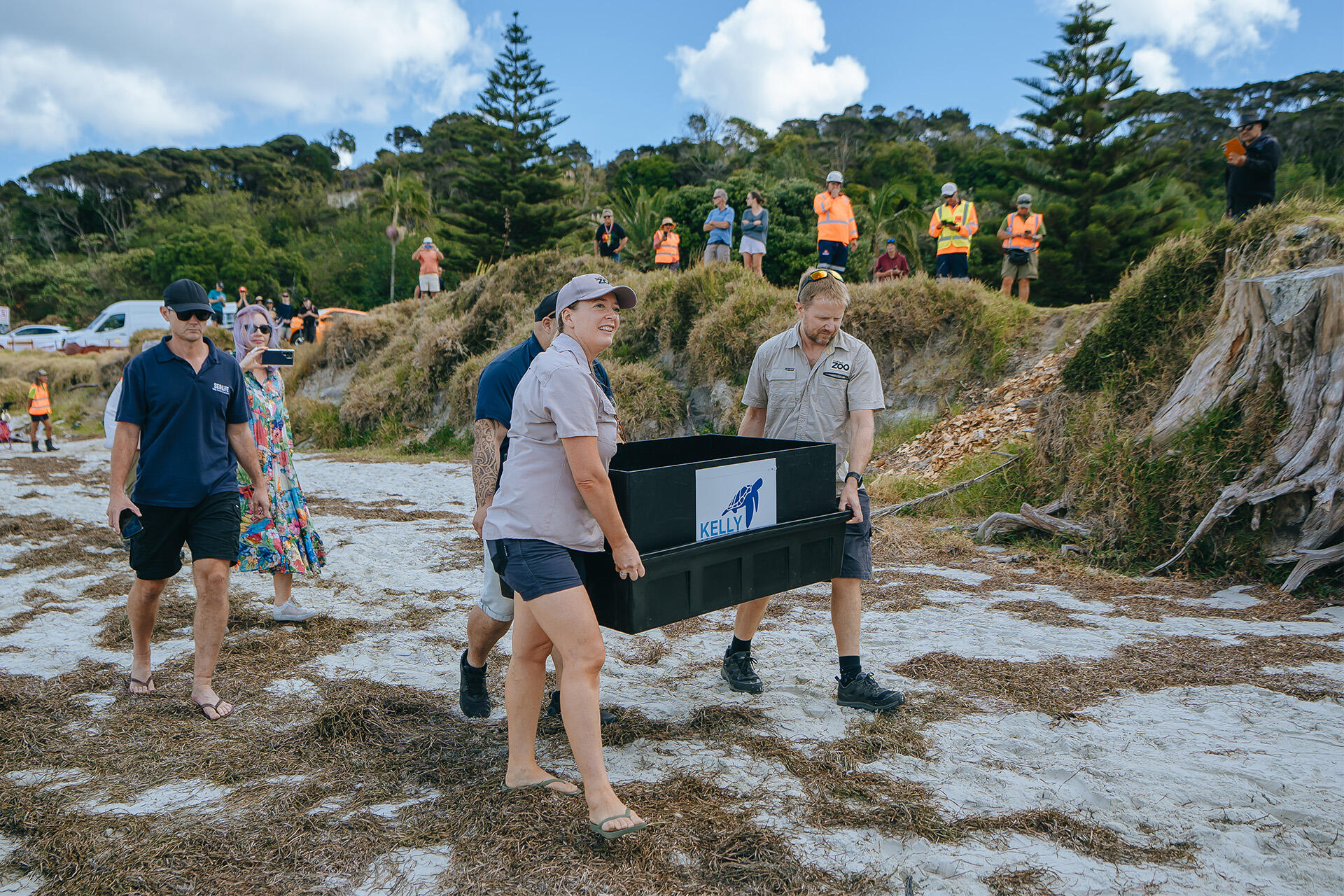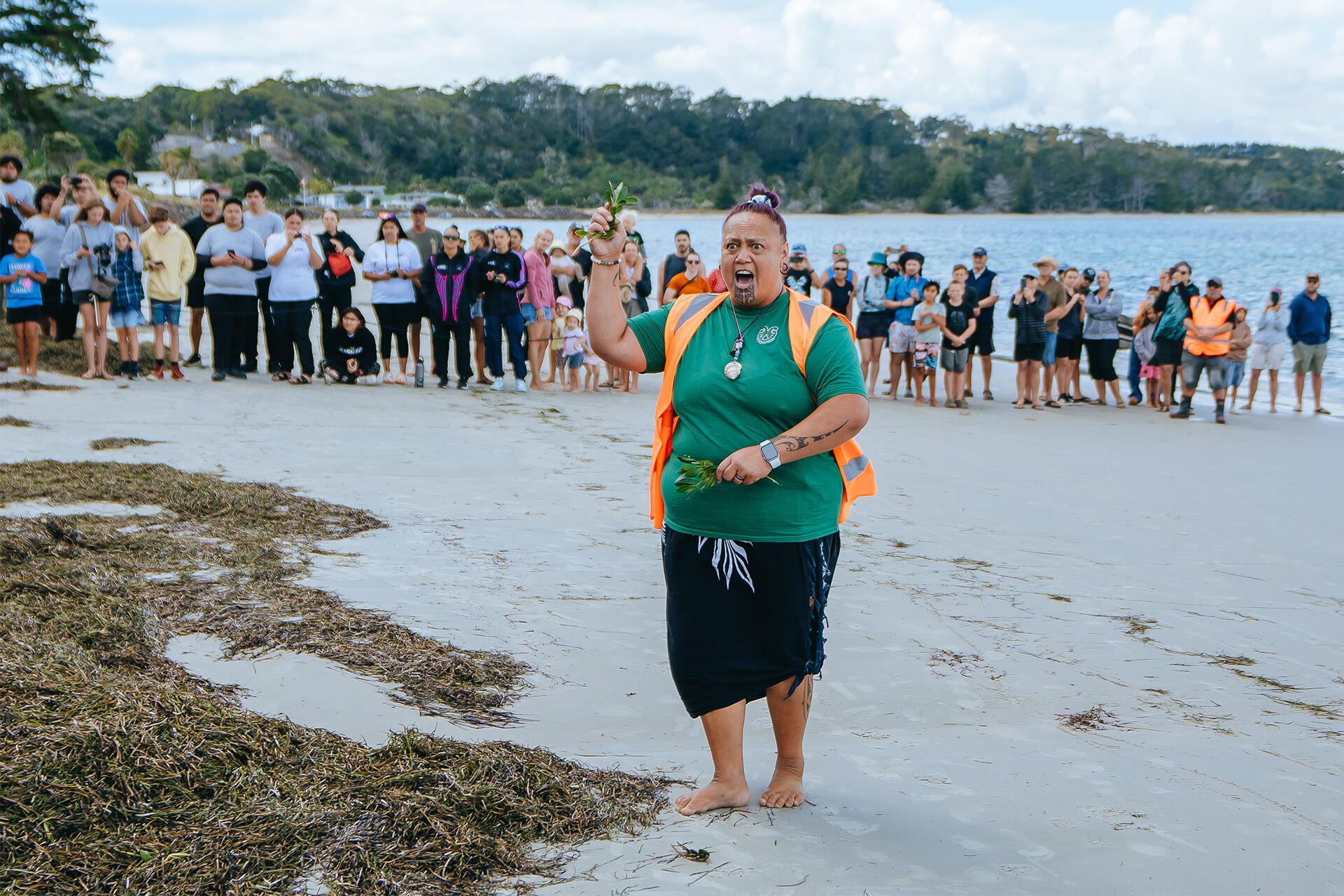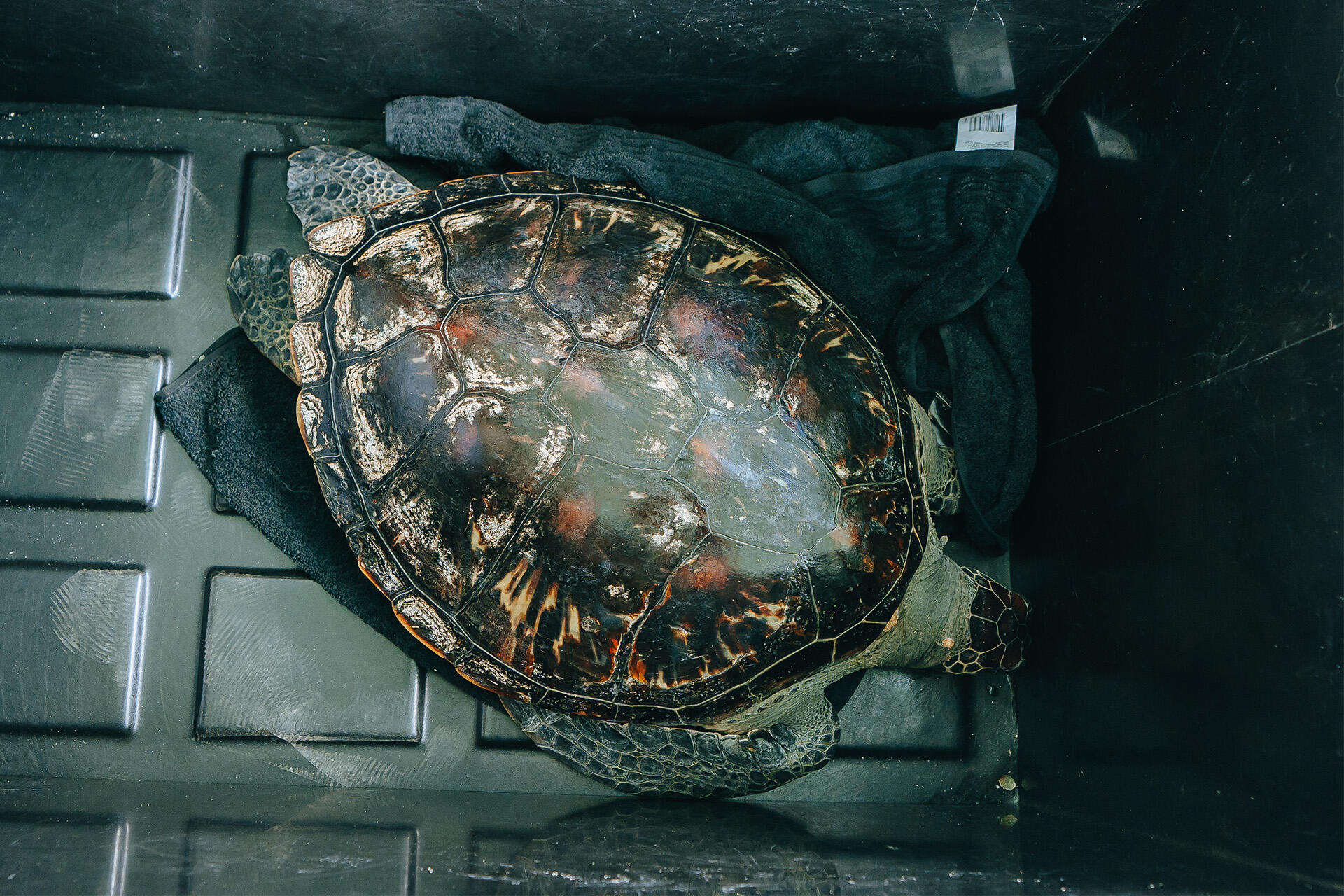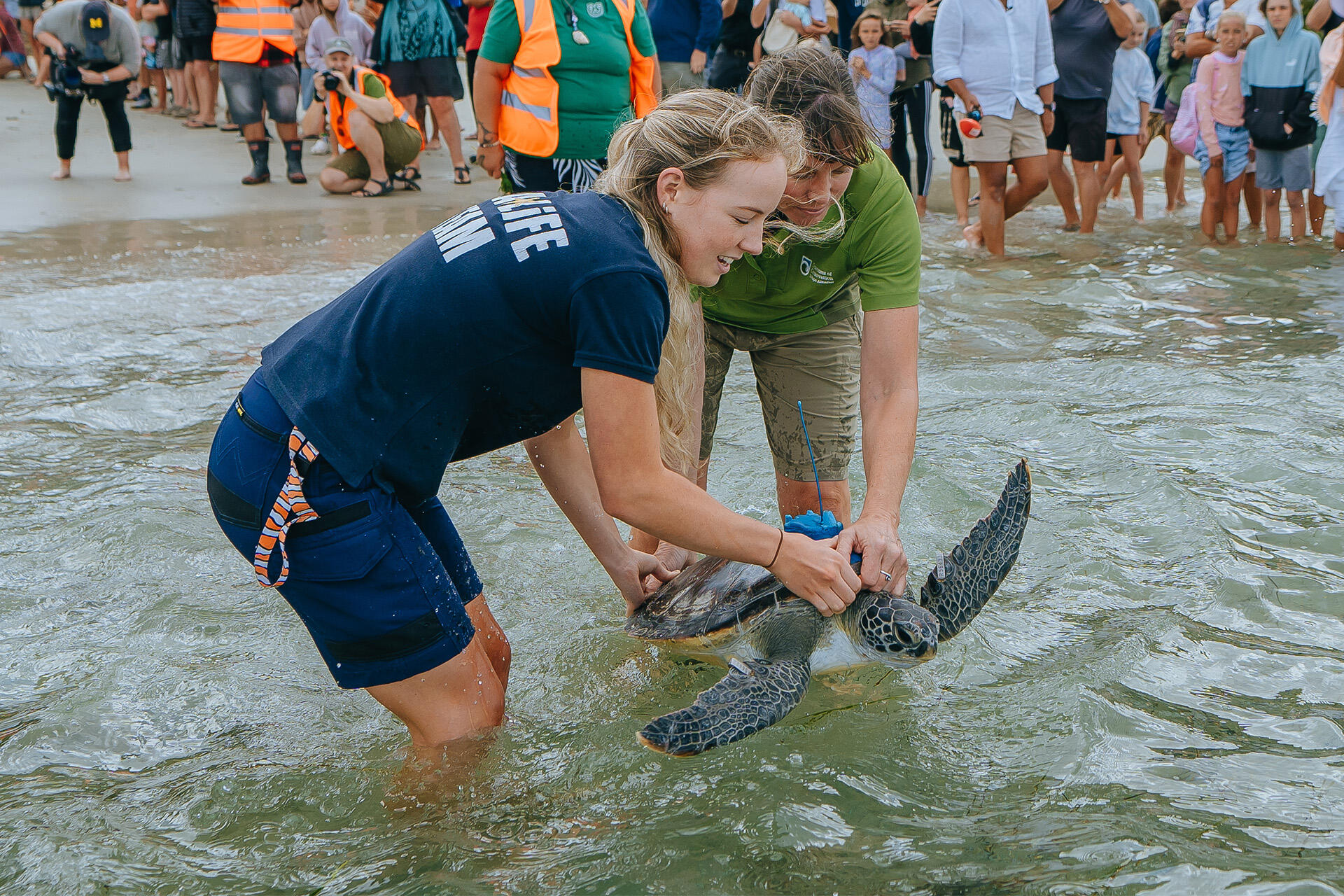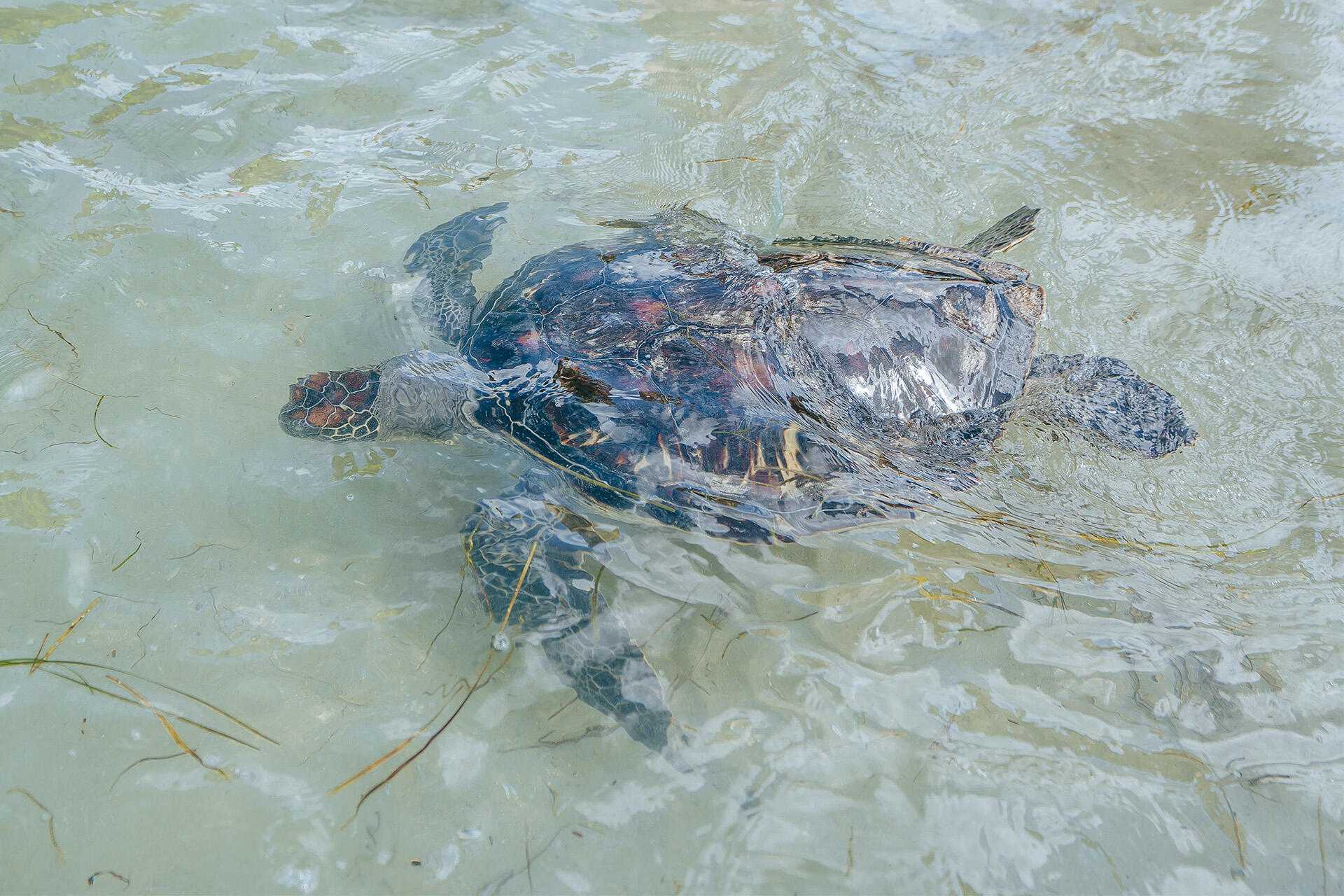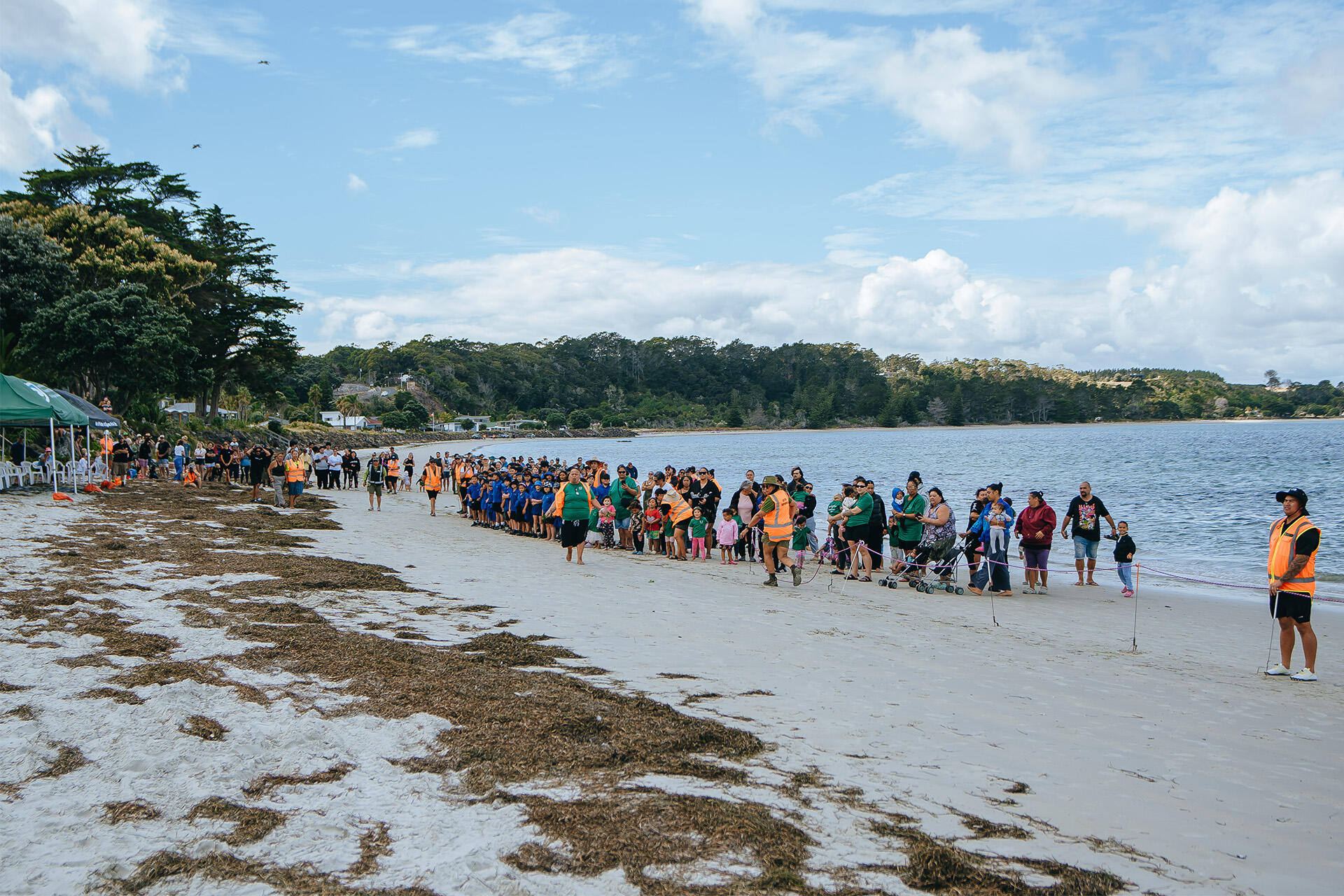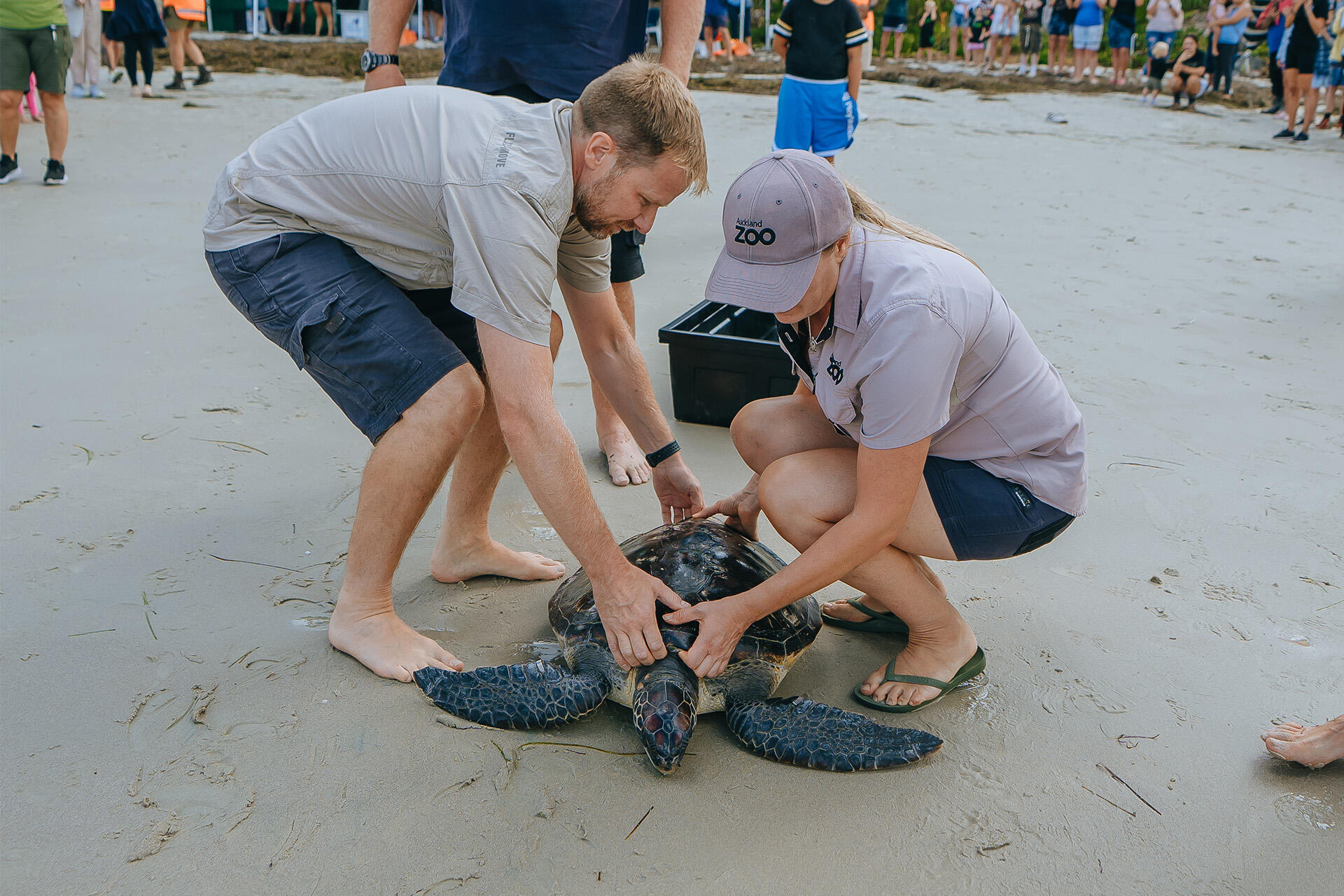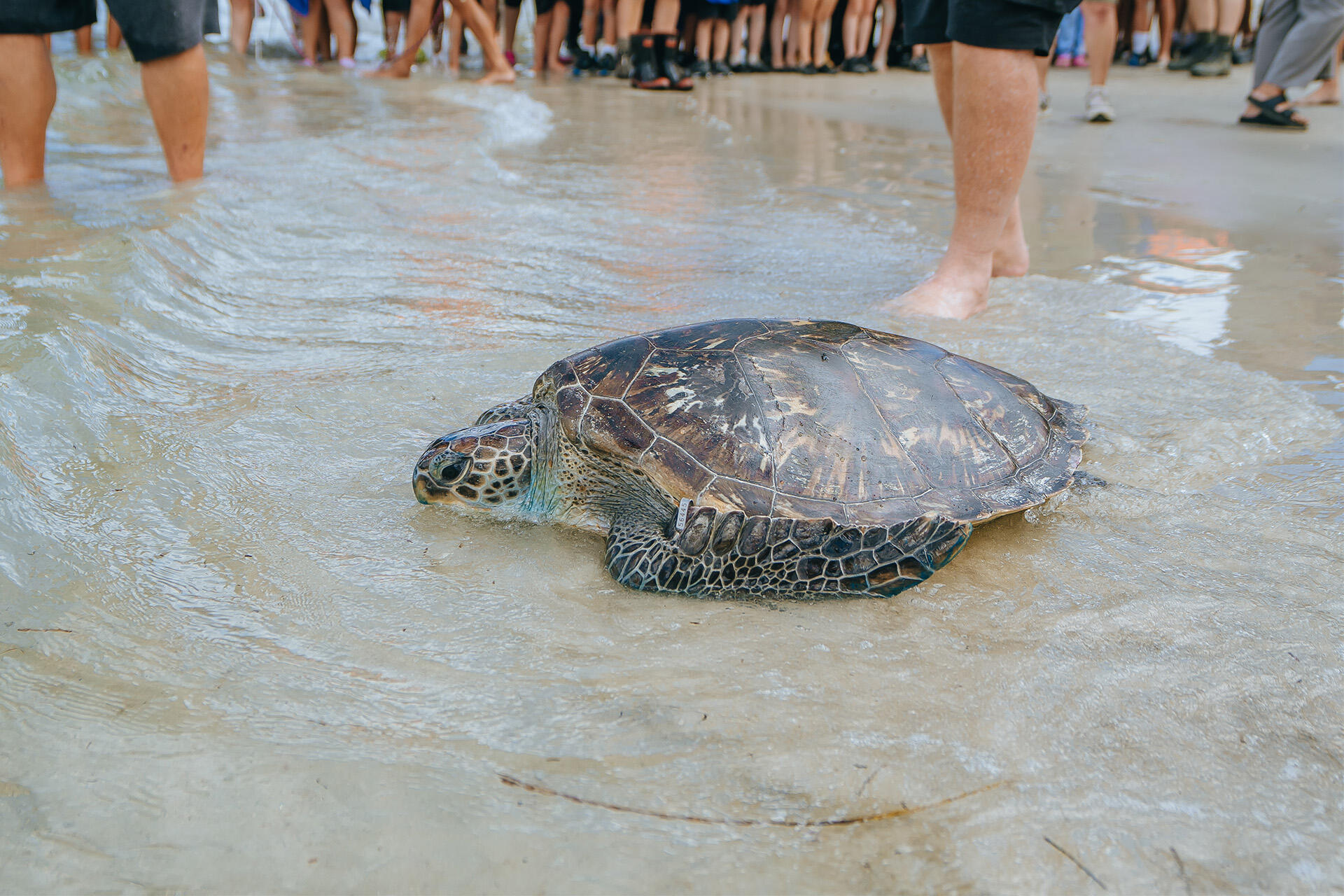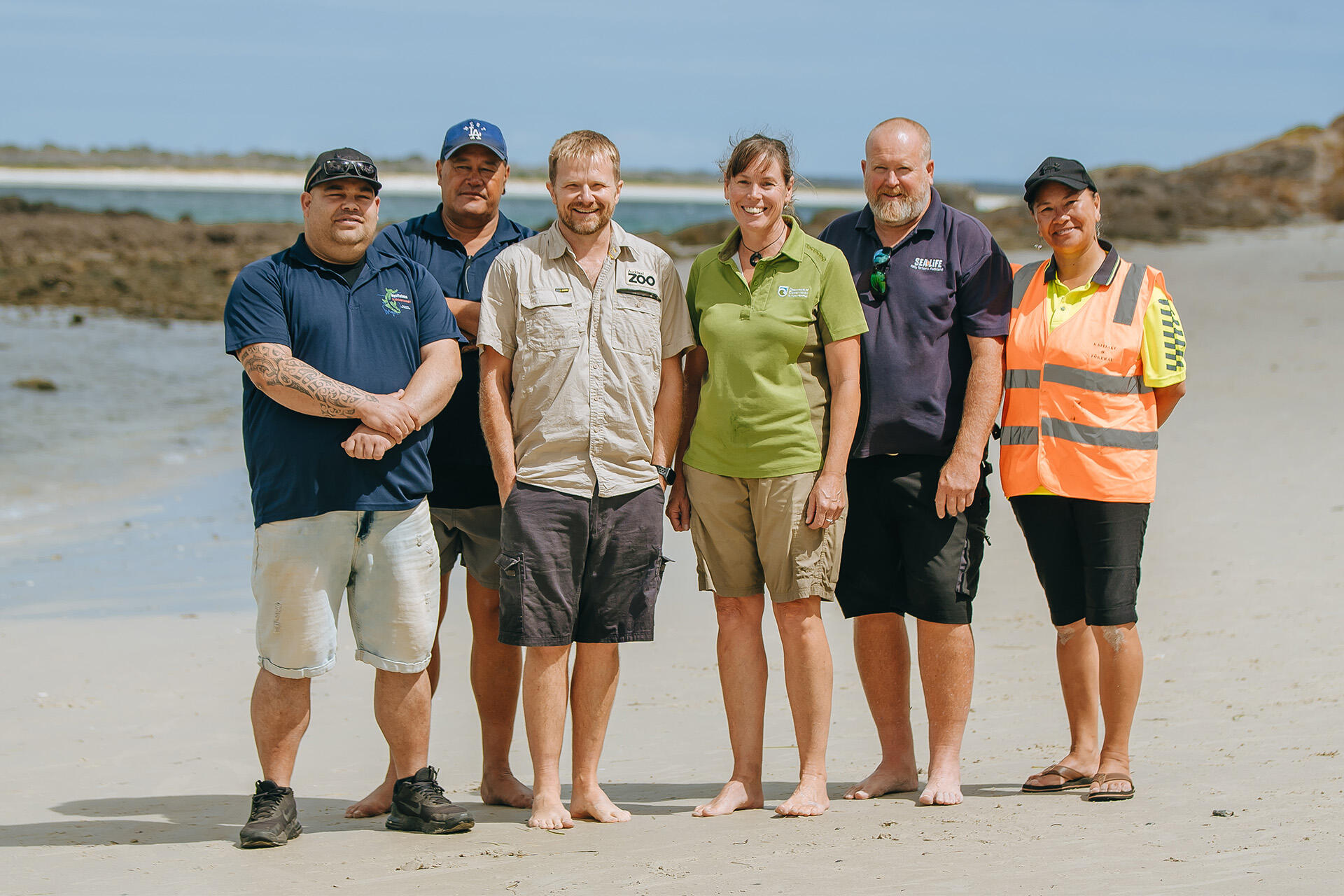Classified as a native species in Aotearoa New Zealand, green sea turtles are known to spend part of their life cycle in the northern North Island, and while they don’t breed in our waters, they are regularly seen in northland including the Rangaunu Harbour. As our Veterinary Services Manager, Dr James Chatterton explains, when they do strand on our beaches, they are always critically ill.
Sometimes found by members of the public, after being rescued by DOC, these turtles come to the Zoo’s veterinary hospital for triage and intensive care and treatment. If injured, this sometimes also involves surgery. Once stabilised, they are transferred to our Team Turtle colleagues at SEA LIFE Kelly Tarlton’s who put incredible mahi into rehabilitating them to help facilitate their release back to the wild.
Yesterday’s turtle releases at Rangiputa beach, that saw amazing local community involvement, were especially significant as two of the turtles were satellite-tagged as part of a ground-breaking new research project.
The project, led by DOC Marine Senior Science Advisor, Dr Karen Middlemiss, in partnership with Ngāi Takoto and Ngāti Kahu and with support from the Zoo and SEA LIFE Kelly Tarlton’s, will be the largest satellite tagging study ever undertaken for green turtles in Aotearoa.
“This is a major research study aimed at understanding how the turtles use our coastlines and harbours. We aim to tag up to 20 turtles over the next three years, and if all goes to plan, the satellite transmitters will track the turtles for up to a year,” says Karen.


